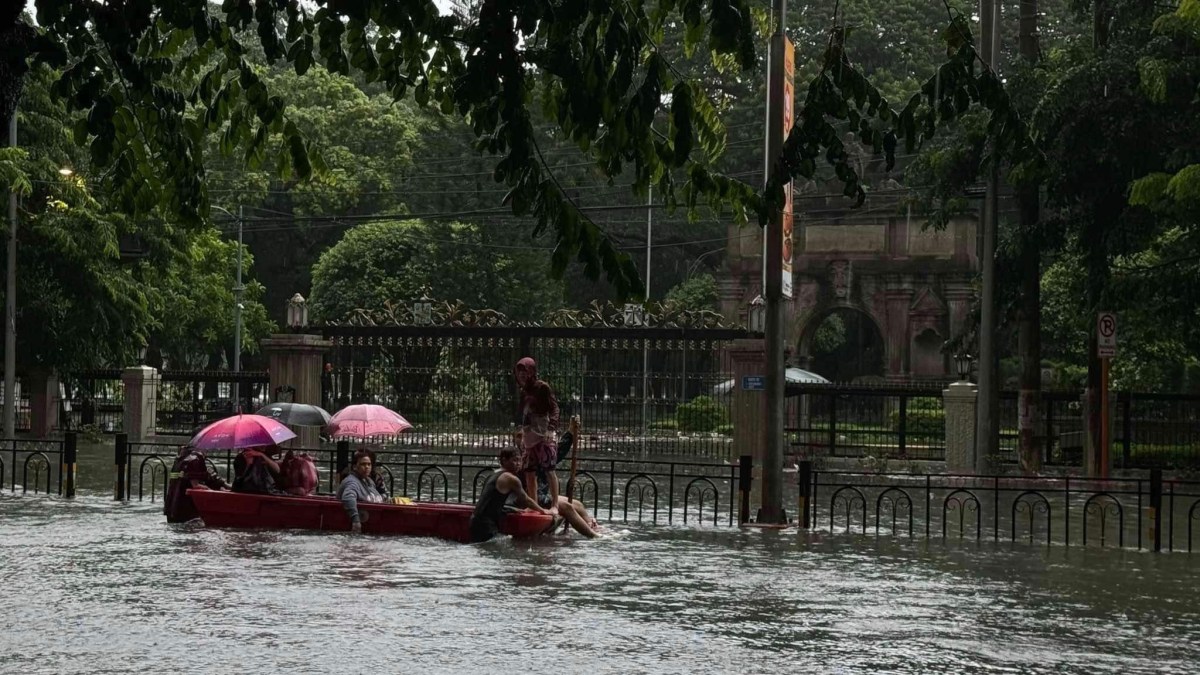By DOMINIC GUTOMAN
Bulatlat.com
MANILA – Amid the onslaught of supertyphoon Carina, environmental groups said the ongoing reclamation and dredging projects may have contributed to the intensified flooding in the Philippine capital.
In the report of Kalikasan, there are 23 ongoing projects in and around Manila Bay, covering 47,000 hectares of seascapes and landscapes that put the Filipino people vulnerable against storm surges, floods, and coastal erosion.
“The intense flooding we are now experiencing in Metro Manila, Rizal, Bulacan, Cavite, and Bataan is a direct result of the massive plunder of our watersheds and reclamation in Manila Bay,” said Jonila Castro, Advocacy Officer of Kalikasan and Spokesperson of AKAP Ka Manila Bay.
They also pointed out that Project Nationwide Operational Assessment of Hazards (NOAH), the Philippines’ primary disaster risk reduction and management program, shows that the coastal areas around Manila Bay are highly vulnerable to flooding.
According to the National Disaster Risk Reduction and Management Council, Habagat, Carina, and Butchoy have affected more than 1 million people, of which 600,000 individuals were displaced, 14 killed, and around 300 houses damaged.
“Our experience with Typhoon Carina is showing us that the promises of massive reclamation, mining, and mega-dams are huge lies perpetuated by big business and their partners in government,” Castro added.
Waves of reclamation
Fisherfolks in the coastal areas of Navotas also attributed the intense flooding they experienced to the reclamation projects in their area.
“The fisherfolks know that the main reason why there is a severe flooding not only in our city, but in the whole National Capital Region (NCR), is the reclamation in Manila Bay, together with the 650-hectare Navotas Bay Reclamation Project of the San Miguel Corporation (SMC) and the local government unit (LGU),” said fishers group Pambansang Lakas ng Kilusang Mamamalakaya (Pamalakaya) – Navotas.
The Navotas Bay Reclamation Project also resulted in the demolition of mussel farms, which affected 1,000 fisherfolk families. The project has been underway since 2022.
“While storms are inevitable, the government has a significant responsibility to protect the environment, prevent severe damages in times of disaster, and aid the livelihood of the fishers… Instead, they favor projects that benefit only big businesses and foreign investors. Now, fishermen and ordinary citizens bear the consequences,” Pamalakaya – Navotas added.
Navotas is only one of the coastal areas affected by the reclamation projects in Manila Bay. The Bay, covering 199,00 hectares in total, stretches from Cavite province through Parañaque, Pasay, Manila, Malabon, and Navotas in Metro Manila – which were severely flooded.
Government’s flood control
Days prior to the disaster, Ferdinand Marcos Jr. said in his State of the Nation Address (SONA) that about 5,500 flood control projects were completed under his administration.
In the document released by Gabriela Women’s Party, the government allotted P244.57 billion for these flood control programs.
However, in an interview with reporters, Marcos said that existing flood control projects have to be reexamined. “We have to look, we have to reexamine some of the designs of our flood control.”
He also attributed the flooding to climate change and to the improper disposal of trash, which the urban poor group Kadamay denounced.
“The flooding and the calamity are not because of the people’s actions. This is due to the state’s pursuit of profit by allowing reclamation projects, mining, and others,” said Kadamay in a tweet.
In relation to this, scientists from Agham highlighted that the severe deforestation of the Upper Marikina River Watershed (UMRW) through quarrying operations in Montalban, together with the relocation housing placement in flood-prone areas are the main causes of the massive flooding.
Kalikasan also reported that 19 mining projects, covering 3,622 hectares, continue to operate in the mountains of Rizal province inside and/or near the UMRW. The province also hosts two hydropower projects, the ongoing Kaliwa-Kanan Dam and the Wawa Dam.
The construction of the Kaliwa Dam alone already is putting some 100,000 residents downstream at risk of massive flooding. Groups have also warned how it would submerge 291 hectares of forests, and could destroy biodiversity and habitat of 126 species in the Sierra Madre.
“Their negligence and disregard for the environment and the welfare of the people must be brought to justice. We will no longer tolerate the continuous destruction of our environment and the exploitation of our communities!,” Castro ended in their statement.
As Carina intensified into a supertyphoon, several provinces were placed under state of calamity including Metro Manila, Oriental Mindoro, Batangas, Cavite, Bataan, and Bulacan. (JJE) ![]()







